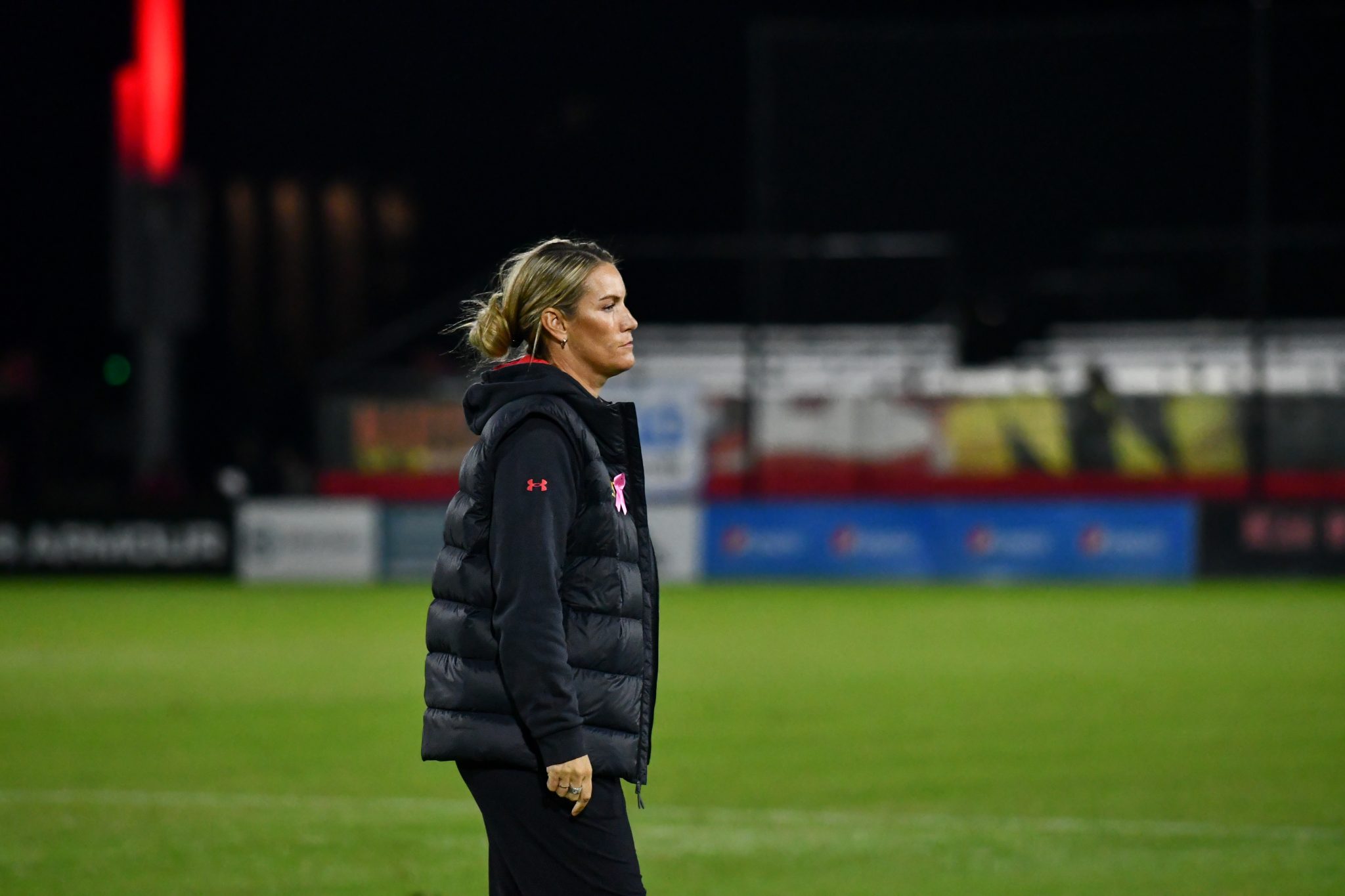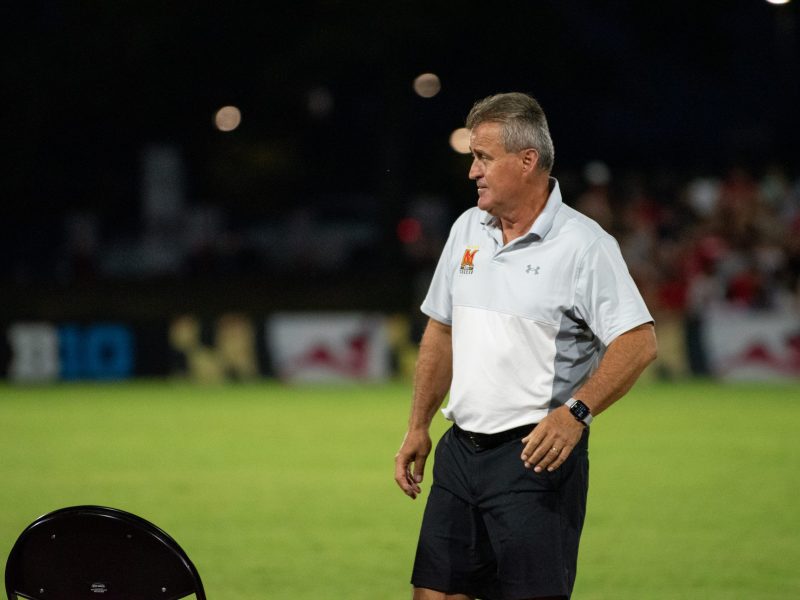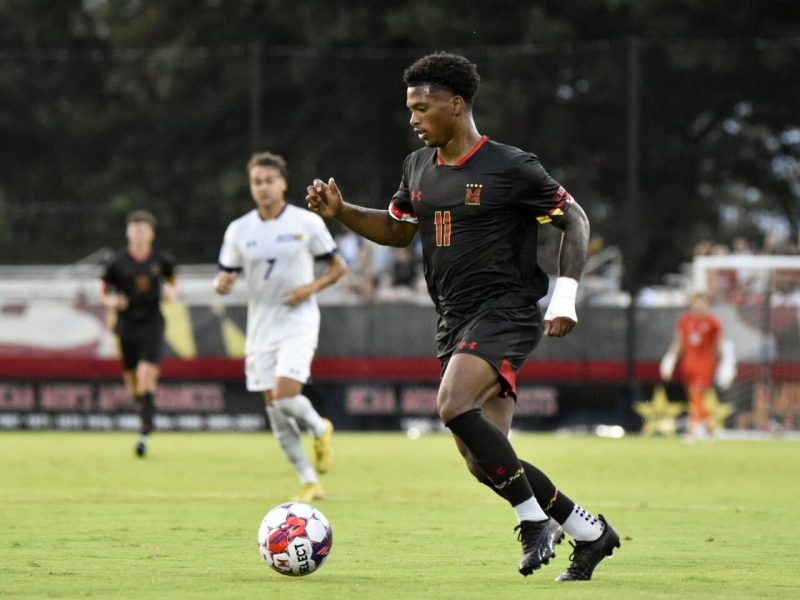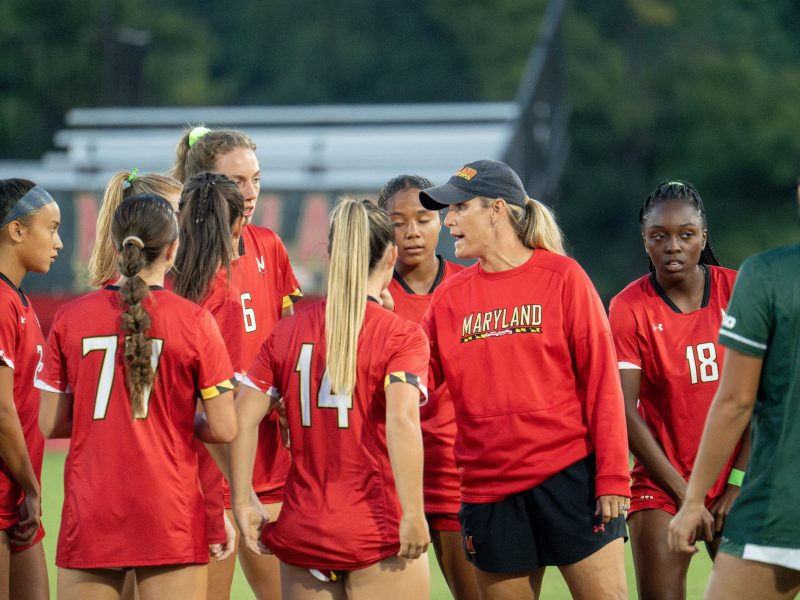Ava Morales stepped up to the penalty spot in a scoreless match against Binghamton on Sept. 10. The sophomore ran up for a left-footed strike and scored a goal that helped Maryland women’s soccer win its third straight game as part of a strong performance in nonconference play.
But that goal and win were the Terps’ last of the season.
Coach Meghan Ryan Nemzer’s second year was supposed to be a step forward for the rebuilding program. Instead, Maryland cratered and finished in the Big Ten’s cellar with a 0-9-1 conference record — a worse mark than in 2022. The team was doomed by an overhauled roster that never coalesced into a cohesive group.
Despite that, the coach remains optimistic.
“I don’t want to look upon the past. I want to look upon the future and I know that there’s a bright future in this program,” Nemzer said. “I know the results weren’t there, but if you watched us from last year to this year, I thought that there was a progression.”
Nemzer brought in 15 freshmen and eight transfers before the 2023 season. The group only had a handful of months to develop a relationship before games began. The coach, realizing that, said her players needed time to grow together to produce results at the beginning of the season.
Maryland won three conference games in 2022, which included the program’s first victory over Michigan. The Terps ultimately finished 11th in Big Ten standings after being projected to finish 13th in the preseason poll.
The conference’s coaches predicted the Terps would remain in that No. 11 spot before the season. They finished last, scoring the Big Ten’s fewest goals and allowing the most.
[Maryland women’s soccer finishes Big Ten play scoreless, loses to No. 19 Indiana 2-0]
Maryland struggled to generate offensive opportunities with a conference-worst 68 shots in Big Ten play — a whopping 108 behind first-place Nebraska. Those offensive woes came from a combination of over-passing and miscommunication that stunted promising chances in the attacking third.
One such play happened in the Terps’ 3-0 loss to Nebraska on Oct. 12. In an attempt to bring more teammates into the attacking third, Kelsey Smith sent a cross to Hannah Schapiro on the right side.
Schapiro, a freshman, looked to one-touch a pass to transfer Lauren Wrigley. But the ball went to the Cornhuskers instead. A misplaced pass or poorly-timed run by Wrigley denied Maryland an opportunity toward goal.
“I think the first step towards having a more aggressive offensive presence is just going to be us keeping the ball and building possession of the field,” Nemzer said in late September.
The Terps’ miscommunication also extended to their own third. They often left attackers unmarked in the penalty box, allowing 28 goals in conference play — the most among Big Ten teams. The gap between Maryland and Illinois — the Big Ten team that conceded the second most goals — was the same as the gap between the Fighting Illini and Wisconsin, the top defensive squad in the conference.
Maryland had four defenders in good position early in its 4-0 loss to Michigan. But when the Wolverines sent a cross into the penalty box, the Terps crumbled. The ball made its way through the defense, finding Lilley Bosley, who took a shot. Maryland goalkeeper Liz Beardsley, a transfer from Georgia, saved Bosley’s shot, deflecting the ball to the top of the box.
Sydney Urban, whose attention was trained on the ball, left a Michigan attacker open to strike a shot past Beardsley and give the Terps an early lead.
[Maryland women’s soccer outclassed by Emma Jaskaniec, No. 21 Wisconsin in 3-0 defeat]
“I think if the backline is able to play as one unit of four, instead of four individuals, that’s going to help us not allow that [a goal against] to happen,” defender Katie Coyle said in September.
Maryland’s inexperience caused struggles but also hinted at future promise. The Terps had the best freshman class in the Big Ten and the 11th best nationally, per Top Drawer Soccer, and had to rely on that young talent this season.
Nine freshmen played in a game. Kennedy Bell and Peyton Bernard highlighted the first-years’ contributions, combining for 2,808 minutes. Bell won Big Ten Freshman of the Week honors in early September and started every match.
She regularly raced up and down the sideline, taking defenders one-on-one and winning those battles to create offensive chances. Nemzer called Bell the “one of the best in the country” at her outside back role.
“What I’m excited about is that they all love the game,” Nemzer said, referring to the team’s freshmen. “I’m excited about where they are now but even more excited about where their growth is.”
Maryland’s transfers also made an impact in the lineup. Veterans like Beardsley, Coyle and Wrigley will return to join the Terps’ youth. The hope is that a full spring season together — something this freshman class didn’t get — will help the team develop its connection.
The 2023 Terps will not be remembered for their rare contributions to the scoresheet or their placement in the standings, but their optimism for the spring and 2024 season stems from their love for the game — a necessity to play under Nemzer.
“If you like the game, this isn’t the place for you,” she said. “But if they love the game, this is the place and they all love it.”



